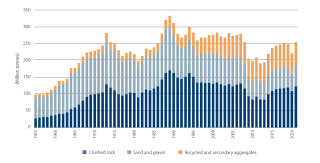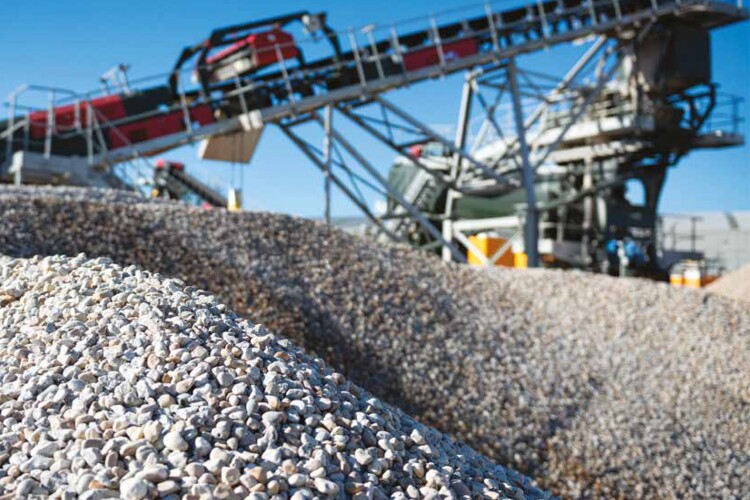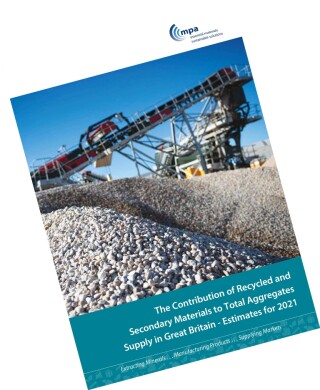The Mineral Products Association (MPA) estimates that recycled and secondary materials accounted for nearly 70 million tonnes of the 253 million tonnes of construction aggregates supplied in Great Britain in 2021.
This places Britain among the leading recyclers of construction materials in Europe, the MPA says, ahead of other major economies, including France and Germany.
Recycled sources of aggregates, around 63 million tonnes of which were produced in 2021, mainly come from construction, demolition and excavation wastes (CDEW), such as crushed concrete and brick, old rail ballast and material from groundworks.
The volume of recycled aggregate could be even higher, the MPA says, but is ultimately limited by the volume of demolition activity that takes place.
Meanwhile, secondary sources of aggregates, which accounted for the remaining seven million tonnes in 2021, are derived from industrial or extractive processes including the production of China clay, slate and chalk, plus glass reprocessing, mining spoil, incinerator ash, and slag from iron and steel production.


MPA director of economic affairs Aurelie Delannoy, who authored the report, said: “Heavy-side construction materials producers have become adept at making efficient use of available resources, producing recycled and secondary aggregates that meet stringent requirements for use across different construction sectors. Taken together with the restoration of mineral extraction sites to beneficial after use – principally nature conservation – our industry is delivering sustainable environmental results whilst others just talk a good game.”
She added: “The absence of regular data monitoring about material arisings and their use make it challenging to track the industry’s continuing progress and can fuel wider misunderstandings of the industry’s role in construction, both in terms of primary resource needs and the potential for greater use of materials that are either recycled or from secondary sources as part of the sector’s contribution towards green growth.”
MPA executive director Mark Russell said: “The contribution of recycled and secondary aggregates to total supply is an outstanding circular economy story that supports the UK’s green industrial revolution, the delivery of government infrastructure and housing ambition, and the resilience of the UK construction supply chain by promoting a diverse source of supply.
“Aggregates producers are recycling all available materials, and have been for many years, to meet our construction needs as efficiently and sustainably as possible. However, it is important to stress that primary aggregates are still needed to meet over 70% of total demand, a situation which will continue for the long term.”
The MPA's 12-page report, The Contribution of Recycled and Secondary Materials to Total Aggregates Supply in Great Britain – Estimates for 2021, is available on the MPA website.
Got a story? Email news@theconstructionindex.co.uk




